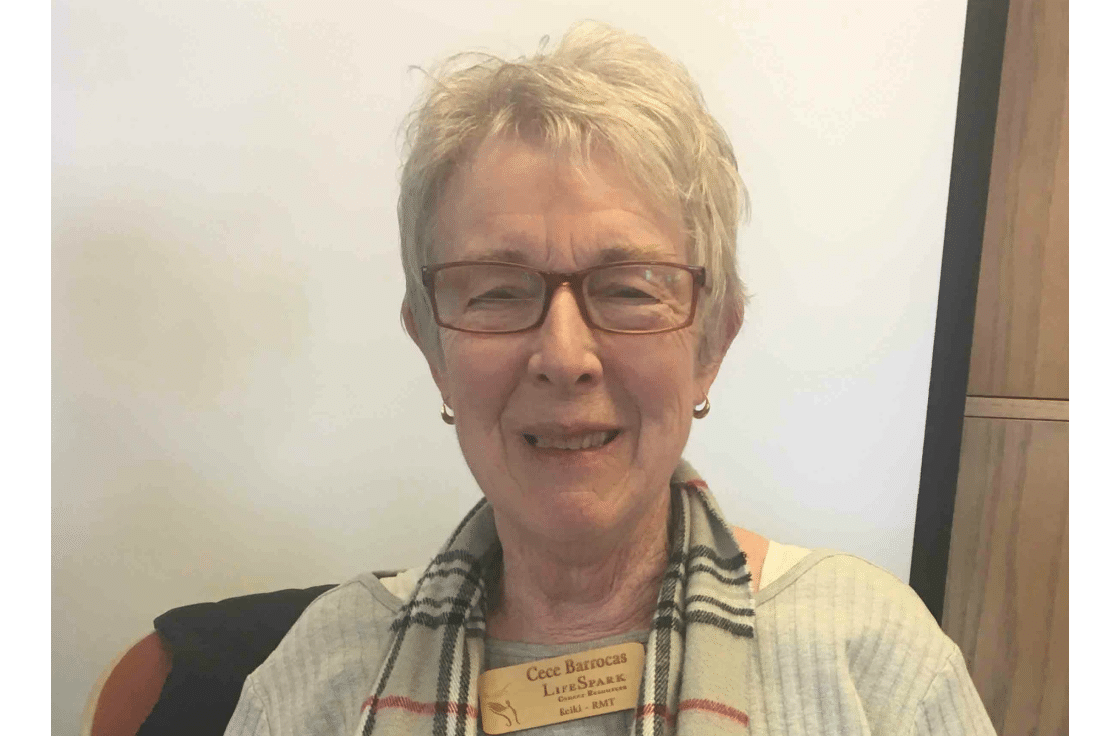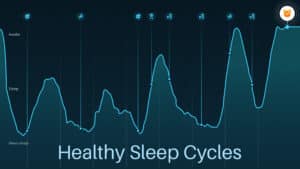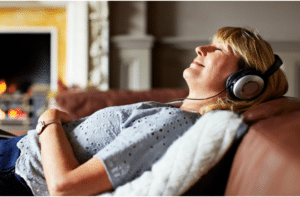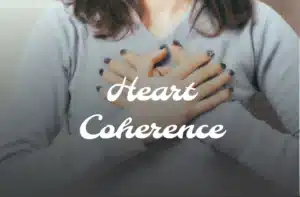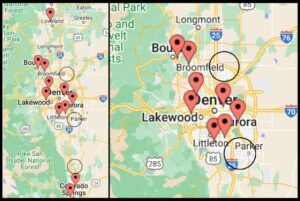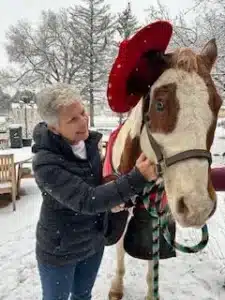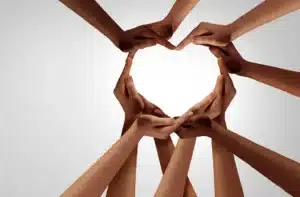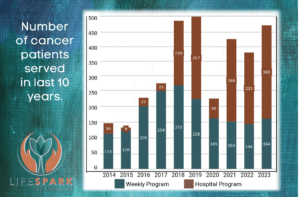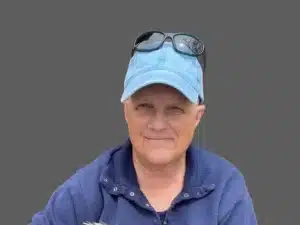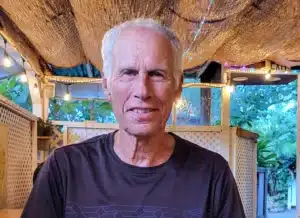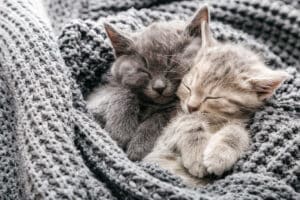Cece Barrocas speaks about her path to Reiki and how she uses it for LifeSpark
By Bob Reynolds
The training for practicing energy therapy work such as Reiki is partly experiential—learning by doing. Another aspect is more formal—books, lectures, notes, discussions in classes, and support groups. People aspiring to become practitioners typically combine those components in a prescribed way. But Cecelia (“Cece”) Barrocas came to energy work by a longer path. She views her training and practice of energy therapies as a progression from graduate work in medical anthropology, looking at traditional healing practices among indigenous peoples of the Americas and Asia. “I wanted to know more about how their methods connect with their cosmology,” she explains.
Since a co-worker introduced her to it in 2007, Cece has been learning and practicing Reiki. She also completed Healing Touch Level 1 and classes in Heart-Centered Living. She has been with LifeSpark since January 2011, when the first Reiki and Healing Touch teams in Colorado Springs were trained. Together with Tammy Tinsley, she was instrumental in keeping the Colorado Springs team together when they lost their treatment space at Rocky Mountain Cancer Center, researching alternative locations, and finding a church where LifeSpark volunteers presently work. Cece was named LifeSpark’s Co-Volunteer of the Year for 2013 because she arranged for the First United Methodist Church in the Springs to serve as LifeSpark’s treatment space in that city. After three years she continues to be site coordinator and primary liaison for LifeSpark’s team in the Springs.
Cece prepares for every Reiki session in the same way: by doing self-practice and treatment daily. “It’s helpful personally and in working with other folks,” she says. “I feel the energy in my body, and—if I’m touching another person—moving through my hands.” A participant she was working with once told her that she felt Cece’s hands in one part of her body even though the hands were actually somewhere else. Cece attributes this frequent phenomenon to the fact that a participant’s body sometimes needs the energy in a place other than where the practitioner is focusing. “Reiki energy goes where it needs to be,” Cece says.
Practitioners follow a protocol recommended by LifeSpark. While treating a participant Cece feels heat or cold, and sometimes tingling, burning, or vibration in her hands. In her words, she is a conduit for the energy that flows through to the client. She doesn’t visualize the energy in terms of flowing water, electricity, or magnetism. “It’s more subtle than that,” Cece says. “I don’t generate it, but I’m able to call on it,” she explains. “Some people intuitively have the ability to do energy work without receiving any formal training.”
“At times, I use my sense of an individual’s bio-field to decide where to focus,” says Cece. “I never attempt to diagnose, and, beyond what they disclose to me, I rarely discuss with a LifeSpark participant what I feel or sense from them.” But regardless of why her participants come to her for treatment, they leave feeling better—often much better. One client described her feelings after a session as being “serene and calm” and “surpassingly, wonderfully relaxed.”
Outside the LifeSpark setting, Cece occasionally treats a friend who is a university professor, who credits Reiki with healing a number of problems for her. According to her, this friend is “an extreme Type A personality who seldom stops to relax or unwind.” But the friend responds well to Reiki energy work both psychologically and physically. Cece explains that pain doesn’t always have a physical cause—it can be a psychological perception of pain. Reiki is particularly good at addressing this sort of pain.
In Cece’s experience, there is growing acceptance among contemporary medical doctors (such as oncologists and cardiologists) that energy modalities are valid. “It’s my belief that energy medicine is the next healing practice to be widely accepted … It’s interesting to me,” Cece muses, “that drug companies are researching plants and animal products that have been used for millennia by indigenous peoples … Western allopathic medicine has come full circle to [revisiting] ancient practices and hands-on treatment.”
Several words and concepts are universal among the traditional healing practices Cece has studied: “chi,” “ki,” or “qi,” meaning life force or life force energy, “prana” or breath, sound, vibration, touch, and no mind-body separation. “I’m a left-brained person, so analyzing, knowing how and why things work, is necessary for me,” Cece explains. Her insatiable thirst for knowledge permeates her practice. But her heart plays as big a role as her head in motivating her. “One of the major things that bring me to this work,” she says, “is gratitude for being given the opportunity to do it.”

